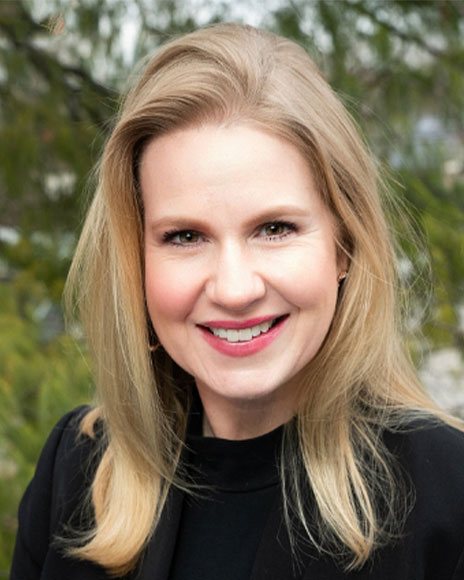Get ahead of the curve by relying on wisdom, not effort

I’m in the thick of a CEO search for a client who’s retiring in December – a passing of the torch that feels all at once routine and profound. And amid the varied hopes of leaders who are laser-focused on nailing a particular kind of successor, I’m giving a lot of thought to what leaders must learn – or unlearn – in the second half of life.
Like most of my peers lodged here in the soft underbelly of midlife, I’m still “striving.”
I catch myself hustling through my days like a squirrel hoarding acorns for winter. If I can pile up enough wins before my prefrontal cortex shrivels up, I’ll be fine, right? Wrong. But human. Like my retiring-CEO friend, I’ll need a new plan entirely.
Meet the striver’s curse.
Many senior leaders I coach describe to me what Arthur Brooks dubbed the “striver’s curse” – a hollow, hidden angst among people who’ve been fed a steady diet of gold stars for consistently hitting their success markers throughout early life. We compete, we climb, we grind. It works. Until it doesn’t.
This is biological. Our brains love novelty, victory and status – the dopamine cocktail that fuels our ambition. And that dopa-hit feels great while our fluid intelligence is still high. Fluid intelligence helps us rapidly solve complex problems, peaks in our early 30s, and begins its decline in our 40s. (Burnout and boredom first signal its descent.) That’s not you getting lazy – it’s nature, nature-ing.
We compete, we climb, we grind. It works. Until it doesn’t.
The resulting paradox is this: The same relentless drive that’s making us successful here in the first half of life makes us miserable in the second.
As leaders age and the prefrontal cortex begins to naturally decline, the drive to keep achieving often does not. We don’t talk about this enough. Father Time is undefeated – the decline is real, and so is the panic. Sliding off “Success Curve No. 1” can feel more like clawing your way up the down escalator.
Here’s the good news.
A second curve is waiting. This curve uses crystallized intelligence – the wisdom, pattern recognition and judgment that come with age. Fluid intelligence fades; crystallized intelligence grows. It’s why older leaders make great mentors, and why professors over 60 consistently outscore younger professors in student ratings.
You might not be ready to retire. But if you’re in midlife and still telling yourself you just need to grind harder, stop. Like “Essentialism” author Greg McKeown says, “Success can be a catalyst for failure.” You succeed, you get busy, you confuse busy with important, and you drown in trivial minutia. McKeown calls for the wise “disciplined pursuit of less.” Sounds simple, except most of us are addicted to more.
As I coach leaders through succession after succession, it becomes more evident that leading and living well past midlife comes down to three decisions:
- Embrace “or” over “and.” We’re obsessed with “and.” More clients and more profitability and more family time and more self-care and … too much. Pick your “vital few.”
- Trade fear of decline for the courage to evolve. Move from the hero to the sage. Shift from CEO to chair, from operator to investor.
- Redefine second-curve success. Fulfillment beyond 50probably isn’t about more accolades. What is it for you? AI can replicate your spreadsheets but not your wisdom and experience. Betting on being more robotic than the robots is not a strategy.
How does this play out practically?
Radical prioritization. If you can’t explain in a single sentence what is essential to your work and life this year, start there. Heed the paradox: The clearer you get about what truly matters, the more noise you’ll attract. Your job is to say “no” a lot. Become less accessible to the urgent and more available to the important.
Second, audit your value creation. Ask yourself: How will my greatest contribution evolve as I age? Stop striving and sprinting and start stewarding.
Finally, design your second success curve on purpose. I see too many people who’ve spent 40 years building something great, only to panic when they realize their relevance was propped up by endless striving. They’re terrified to stop because they have no idea who they’ll be without the hustle. Here’s the secret: You can evolve – but only if you stop scratching at the same patch of dirt.
Become less accessible to the urgent and more available to the important.
Feeling tired or bored?
That might be your brain’s invitation to toggle over to the wellspring of crystallized intelligence ready to be tapped. It’s your biology inviting you to trade the chase for ladder-building.
The best leaders I know in their 50s, 60s and 70s are more dangerous than ever – not because they’re running faster, but because they know exactly where to stand still.
More from Mandy Haskett
More articles from Leadership Consultant Mandy Haskett
- How leading by microwave can burn you
- Culture is a catalyst for the hybrid squeeze
- As AI proliferates, machines need soft skills, too
This article originally appeared in the Indianapolis Business Journal on August 1, 2025.
